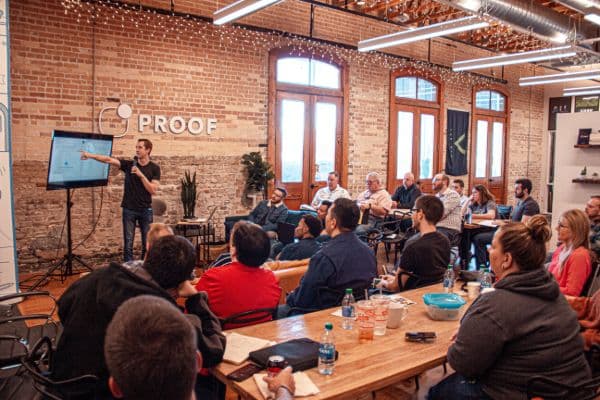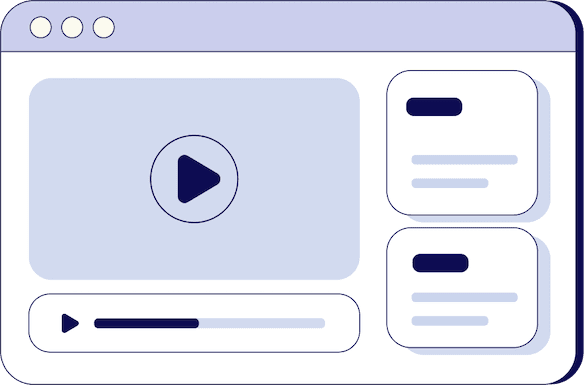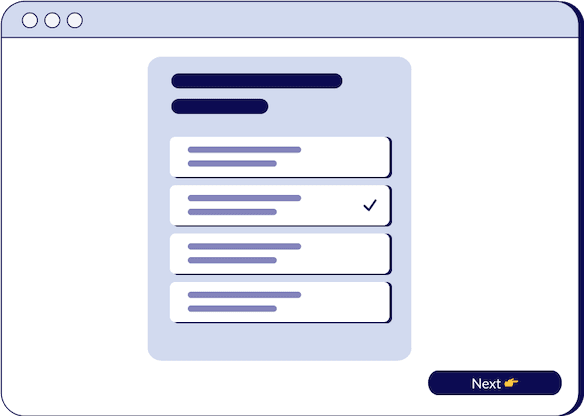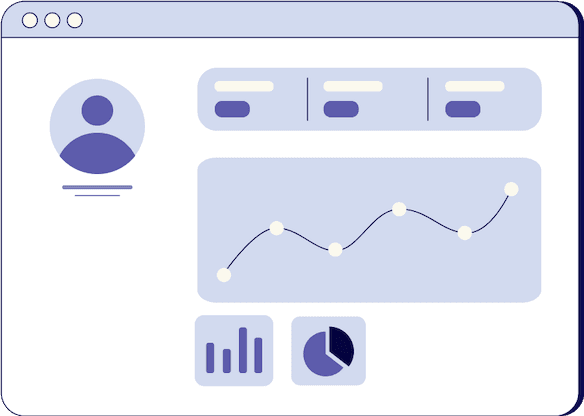
Top 5 Sales Pitch Tips to Crush Every B2B Sales Presentation
Patrick Dang
Sales Coach

- duration
- 12 min
- Average Score
- 90%
- Stars
- 5
In today's fast-paced business environment, how important is it to keep sales presentations short and impactful? Statistics show that the average attention span of an adult is decreasing, now lingering around 8 seconds, underscoring the need for brevity in sales communications. In this session, the focus is on mastering the art of concise sales presentations. By understanding customer needs and tailoring presentation duration accordingly, sales professionals can enhance their effectiveness in engaging prospects and closing deals.
Understanding Customer Needs for Tailored Presentations
The key to a successful sales presentation lies in its alignment with customer needs. A common misconception is that longer presentations, filled with extensive details, will inherently impress the client. However, this approach often leads to information overload and a disengaged audience. Instead, it's crucial to focus on what the customer values most: solutions to their problems.
A concise presentation starts with a deep understanding of the customer's challenges and pain points. This knowledge allows for a streamlined presentation that addresses the most critical issues. The objective is not to overwhelm the client with information but to provide clear, relevant solutions. For instance, if a client is seeking efficiency in their operations, the presentation should directly address how your product or service enhances operational efficiency, rather than diving into all features and functionalities. This targeted approach not only respects the client's time but also demonstrates a clear understanding of their needs, significantly enhancing the likelihood of deal closure.
Keeping Presentations Clear and Concise
The art of brevity in sales presentations is not just about reducing time; it's about maximizing impact within a limited timeframe. A clear, concise presentation is more than just a short one; it’s one that delivers value without unnecessary fluff. The key is to keep the presentation focused on the solutions and benefits that directly address the client's needs.
During the session, it’s vital to articulate the value proposition succinctly. Sales professionals should avoid technical jargon and complex explanations that can confuse the client. Instead, use simple, relatable language that makes the benefits of the product or service crystal clear. For example, instead of detailing the technical workings of a software solution, focus on how it simplifies tasks, saves time, or increases revenue. This approach ensures that the client quickly grasps the value being offered, fostering a quicker decision-making process.
Setting a Clear Agenda for Effective Meetings
Have you ever considered how a well-defined agenda can transform the outcome of a sales meeting? A survey by Microsoft revealed that professionals spend an average of 31 hours per month in unproductive meetings. To combat this, setting a clear and concise agenda for every sales meeting is not just helpful; it's essential. In this session, we explore the significance of a clear agenda in sales meetings, offering practical tips on how to communicate meeting objectives and steps effectively to prospective clients.
Communicating Meeting Objectives Clearly
The first step in setting an effective agenda is to communicate the objectives of the meeting clearly to the client. This communication should happen well before the meeting, ideally at the point of scheduling. Clear objectives serve as a roadmap, guiding both the sales representative and the client through the meeting. It sets expectations right from the start, ensuring that both parties are on the same page regarding the meeting's purpose.
For example, if the goal of the meeting is to demonstrate how a specific service can enhance a client's operational efficiency, this should be stated upfront. This clarity helps the client prepare any relevant questions or concerns they might have, leading to a more productive and focused discussion.
Reiterating the Agenda at the Start of the Meeting
Even if the agenda has been communicated beforehand, it’s crucial to reiterate it at the start of the meeting. This practice reinforces the meeting's purpose and ensures that any changes or updates since the initial communication are addressed. It also serves as a reminder to the client about what to expect, thus keeping the meeting focused and on track.
During this part of the session, it's also essential to confirm with the client that the agenda aligns with their expectations. This can be a simple confirmation, such as asking, “Does this agenda cover the areas you’re interested in, or are there other points you’d like us to address?” This not only shows respect for the client’s time and needs but also opens the door for any adjustments that might make the meeting more beneficial for them.
Keeping the Agenda Customer-Focused
The most effective agendas are those that are customer-focused, addressing the specific problems and needs of the client. Tailoring the agenda to each client shows that you understand and value their unique challenges and are prepared to offer relevant solutions. This approach requires a thorough understanding of the client’s business, pain points, and what they hope to achieve from the meeting.
For instance, if a client is primarily concerned with improving their customer engagement, the agenda should focus on how your product or service specifically addresses this need. This might involve a case study demonstration, a walkthrough of relevant features, or a discussion of potential implementation strategies.
Engaging Prospects Through Problem-Solving and Interactive Presentations
How can sales presentations transform from a monologue into a dynamic, problem-solving dialogue? According to a study by Forrester, interactive presentations can increase engagement and retention rates by up to 30%. In this session, the spotlight is on turning sales presentations into an interactive journey focused on solving the prospects' specific pains. The emphasis lies on orienting presentations towards problem-solving and encouraging prospects to actively participate through questions and feedback.
Problem-Solving as the Core of Sales Presentations
The cornerstone of an effective sales presentation is its focus on problem-solving. Every prospect comes with a unique set of challenges, and your presentation should be tailored to address these specific issues. This approach requires a deep understanding of the prospect's business, the problems they face, and how your product or service can provide a solution. For instance, if a prospect is struggling with low customer retention, your presentation should directly address how your solution can help improve their customer engagement and retention strategies.
This problem-solving focus does more than just provide information; it demonstrates empathy and understanding, showing the prospect that you are invested in their success. By framing your presentation around the prospect's pain points, you transform the session from a generic sales pitch into a customized solution discussion, which is more likely to resonate with the prospect.
Encouraging Interaction and Questions
Another critical aspect of engaging prospects is creating an environment where they feel comfortable asking questions and providing feedback. This interaction is crucial as it allows the prospect to clarify their doubts and delve deeper into how your solution can benefit them. It also provides you, the sales representative, with valuable insights into the prospect's thought process and potential objections.
To foster this interactive environment, it’s essential to invite questions and feedback throughout the presentation. This can be done by pausing at strategic points and asking if the prospect has any questions or needs further clarification on what has been presented. For example, after explaining a key feature of your product, you might ask, “How does this feature align with what you’re looking for in terms of improving your process?” This approach not only makes the presentation more engaging but also ensures that the prospect’s concerns are addressed in real-time.
Mastering the Follow-Up: Clear Next Steps and Handling Objections
Why is the follow-up phase critical in sealing a deal after a sales presentation? Research suggests that 80% of sales require five follow-up calls after the initial meeting, yet only 44% of sales reps make more than one follow-up. This session delves into mastering the art of the follow-up, focusing on establishing clear next steps, handling objections effectively, and maintaining engagement to move toward closing the deal. This part is essential in understanding customer hesitations, addressing them directly, and strategizing the follow-up process for successful outcomes.
Establishing Clear Next Steps
The conclusion of a sales presentation is just the beginning of the journey towards deal closure. One of the key aspects of an effective follow-up is establishing clear next steps. This involves summarizing what was discussed during the presentation and agreeing on the actions that both you and the prospect will take moving forward. For example, if a prospect needs to discuss the proposal with their team, setting a specific date for the next meeting or call can keep the momentum going.
This process of setting next steps should be collaborative, involving the prospect in deciding what these steps should be. This could mean asking direct questions like, “What do you see as the next steps from here?” or “When would be a good time to reconvene and discuss any questions that may arise after today’s session?” This approach not only shows that you respect the prospect’s decision-making process but also helps in creating a roadmap towards finalizing the deal.
Handling Objections and Understanding Hesitations
A critical part of the follow-up process is handling objections and understanding customer hesitations. It's common for prospects to have concerns or objections, and how these are addressed can make or break a deal. The key is to listen actively, understand the underlying reasons for their hesitations, and provide clear, concise responses that alleviate these concerns.
For instance, if a prospect is hesitant about the cost, you might discuss the return on investment or offer a comparison with other options. It’s important to handle objections not as roadblocks but as opportunities to further clarify the value of your solution. Also, asking open-ended questions can uncover any hidden objections that the prospect might not have initially voiced.
Maintaining Engagement and Momentum Post-Presentation
Finally, maintaining engagement and momentum after the presentation is crucial for moving the deal towards closure. This involves regular, value-added communication that keeps your solution top of mind for the prospect. This could be through sharing additional resources, such as case studies or articles relevant to their challenges, or quick check-in emails or calls.
It's also important to set and respect timelines for follow-up actions. If you promised to send additional information or answers to specific questions, doing so promptly demonstrates reliability and commitment. Regular follow-ups, while not being overly persistent, strike a balance between showing interest and respecting the prospect's decision-making process.
In conclusion, mastering the follow-up after a sales presentation is pivotal in the sales process. Watch this session to learn more about setting clear next steps, effectively handling objections, and maintaining engagement to increase the likelihood of a successful deal closure. Remember, the follow-up is where the sales presentation’s potential is realized, and deals are won or lost.
How Triple Session works
Training, Testing, & Feedback
Triple Session's proven formula accelerates your sales performance through consistent, organized practice, backed by measurable results.

Bite-Sized Knowledge
Our expert-led video sessions simplify complex sales concepts into easy-to-digest 5-15 minute videos for better retention.

Test Your Understanding
After each session, there will be a quiz to test your understanding and help you improve on any areas that need more attention.

Evaluate and Grow
Get progress snapshots after each quiz to track your improvements and achieve your sales mastery goals.